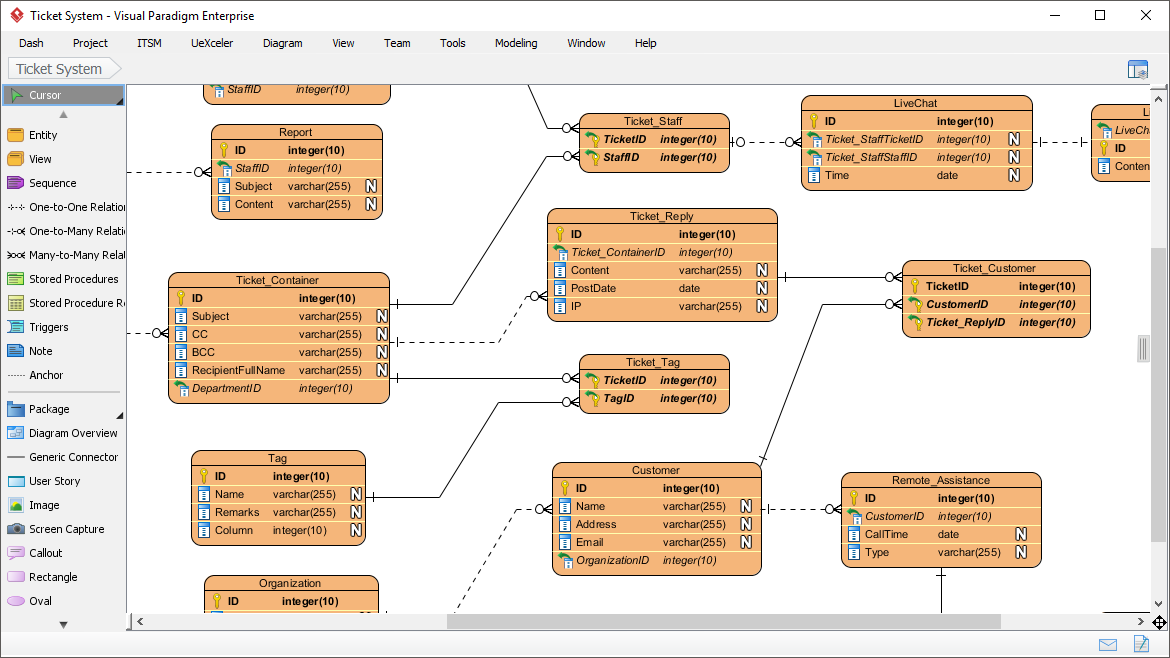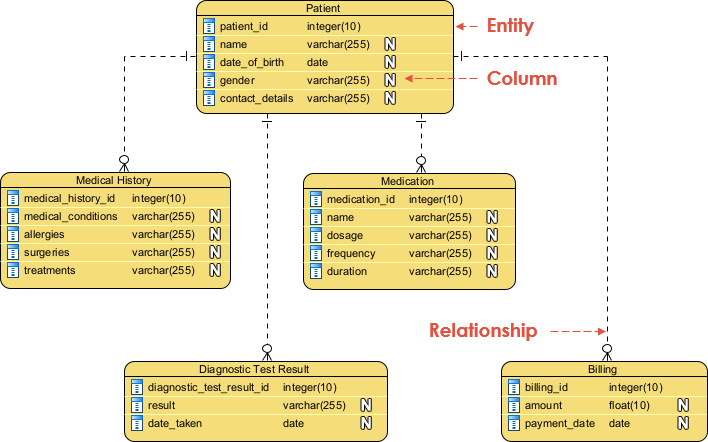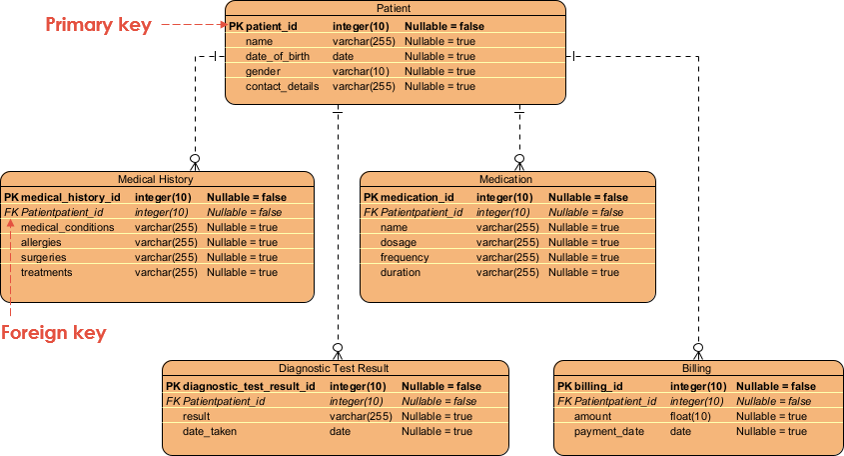Mastering ER Modeling: A Step-by-Step Guide with Real-World Examples (Part 3 of 5)
Problem Statement: Hospital System
The hospital currently relies on a paper-based system to manage patient information, medical records, and billing. The paper-based system has several limitations, including difficulty in accessing patient information in a timely manner, increased risk of data loss or misplacement, and errors in billing and medical record keeping. As a result, the hospital has decided to develop an electronic health record system to improve the efficiency and accuracy of their operations.
The new electronic health record system should be able to store and manage patient demographic information, medical history, diagnostic test results, medication prescriptions, and billing information. The system should also be able to generate reports and analytics on patient care, including patient outcomes and hospital performance metrics.
The hospital has several departments that will need access to the electronic health record system, including the nursing staff, physicians, laboratory staff, and billing department. The system should be designed to ensure that each department can access the information they need while maintaining the confidentiality and privacy of patient information.
The hospital has also identified several key challenges that need to be addressed in the design of the electronic health record system. These challenges include ensuring data accuracy and consistency, managing large volumes of patient data, integrating with existing hospital systems, and ensuring the security and privacy of patient information.
The hospital has set a timeline of six months for the development and implementation of the electronic health record system. The system should be designed to be scalable and adaptable to future changes in the hospital’s operations and requirements.
(* Screenshot of Visual Paradigm ERD Example UI)

Step-by-Step Guide to Entities Identification:
- Read the problem statement carefully and identify the nouns or noun phrases that represent objects or concepts. In this case, the nouns or noun phrases include “hospital”, “electronic health record system”, “patient information”, “medical records”, and “billing”.
- Consider each noun or noun phrase as a potential entity and determine if it represents a distinct object or concept in the problem domain. In this case, each of the identified nouns or noun phrases represents a distinct object or concept that needs to be managed by the system.
- Determine the attributes of each entity. Attributes are the characteristics or properties that describe the entity. For example, the “hospital” entity may have attributes such as name, location, and size. The “patient information” entity may have attributes such as name, date of birth, and contact information. The “medical records” entity may have attributes such as diagnosis, treatment plan, and medication history.
- Identify the relationships between the entities. Relationships are the connections or associations between entities. For example, the “patient information” entity may have a relationship with the “medical records” entity, as each patient’s medical records will be associated with their personal information.
- Refine the entities and relationships based on feedback from domain experts and stakeholders, and adjust the ER diagram accordingly.
By following this step-by-step guide, you should be able to identify the entities and relationships necessary for creating an ER diagram that accurately represents the hospital’s electronic health record system.
Develop a Logical ERD for the Database
Assuming that the hospital needs to store and manage patient demographic information, medical history, diagnostic test results, medication prescriptions, and billing information, the following entities and relationships may be present in the logical ERD:
Entities:
- Patient: stores patient demographic information such as name, date of birth, gender, contact details, etc.
- Medical History: stores the medical history of the patient including medical conditions, allergies, surgeries, and treatments.
- Diagnostic Test Result: stores the results of diagnostic tests performed on the patient such as blood tests, X-rays, MRIs, etc.
- Medication: stores information about medications prescribed to the patient such as name, dosage, frequency, and duration.
- Billing: stores information about hospital charges and payments made by patients or insurance companies.
Relationships:
- A patient may have multiple medical histories, diagnostic test results, and medications prescribed. Hence, there may be a one-to-many relationship between Patient and Medical History, Diagnostic Test Result, and Medication entities.
- A diagnostic test result may belong to only one patient. Hence, there may be a one-to-many relationship between Patient and Diagnostic Test Result entities.
- A medication may be prescribed to only one patient. Hence, there may be a one-to-many relationship between Patient and Medication entities.
- A patient may have multiple billing records. Hence, there may be a one-to-many relationship between Patient and Billing entities.
Note that this is just one possible logical ERD, and the actual design may vary depending on the specific requirements of the hospital and the electronic health record system being developed.
Creating the Logical ERD

Refine the Logical ERD to Physical ERD
To refine the logical ERD to a physical ERD, we need to make a few modifications to the ERD to reflect how the data will actually be stored in a database. Here are some possible modifications that we can make:
- Define primary keys: Each entity in the ERD needs a primary key to uniquely identify each record in the table. We can modify the logical ERD to define primary keys for each entity using the
<<PK>>notation. - Define data types: Each attribute in the ERD needs a data type to indicate the type of data that will be stored in the database. We can modify the logical ERD to include data types for each attribute.
- Define relationships: We need to modify the logical ERD to define the relationships between entities using foreign keys.
Creating the Physical ERD

Summary
The article outlines the issue faced by a hospital that still relies on a paper-based system for managing patient information, medical records, and billing. To enhance the efficiency and accuracy of their operations, the hospital intends to create an electronic health record (EHR) system.
The article offers a comprehensive guide to identify the essential components necessary for creating an ER diagram that accurately represents the hospital’s EHR system. It provides a sample logical ERD that includes crucial entities such as Patient, Medical History, Diagnostic Test Result, Medication, and Billing, along with their attributes and relationships.
The article also discusses the necessary modifications required to refine the logical ERD to a physical ERD, including defining primary keys, data types, and relationships.

